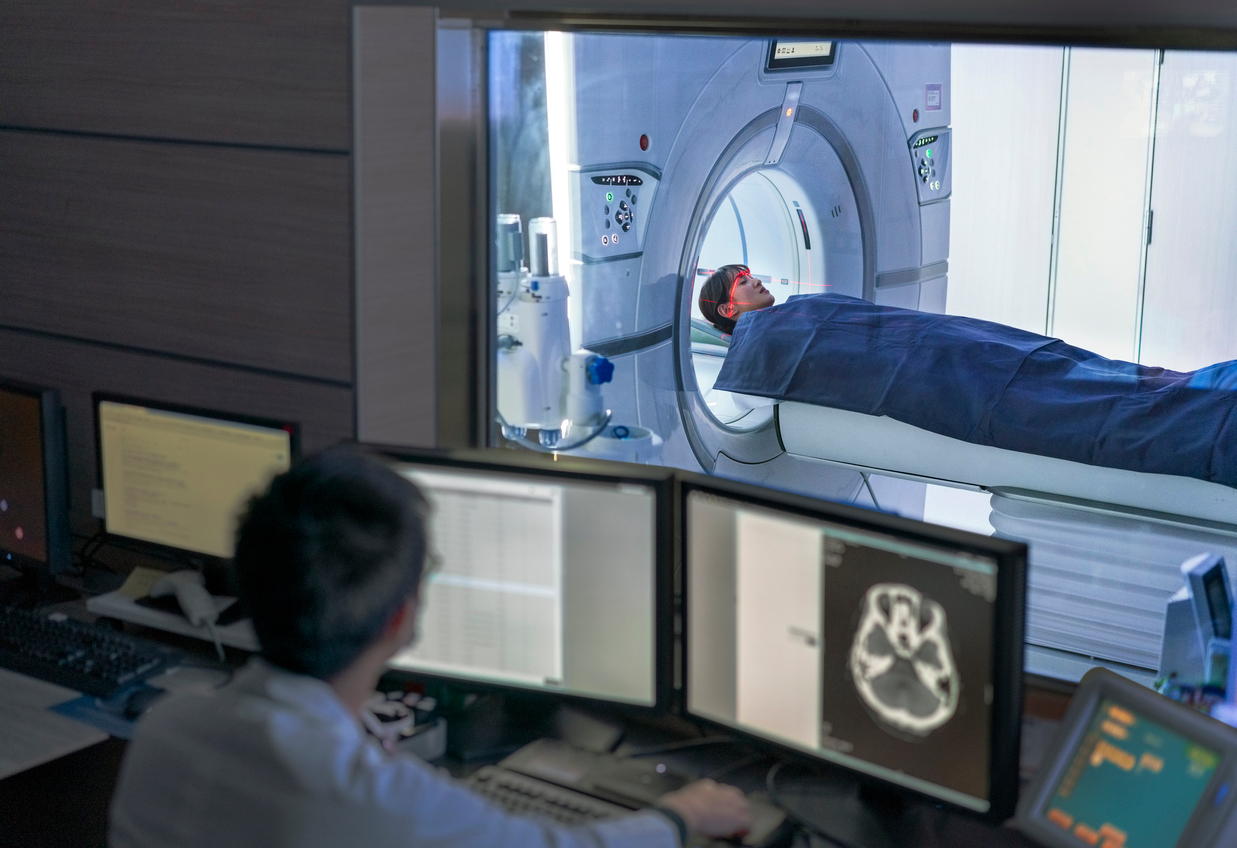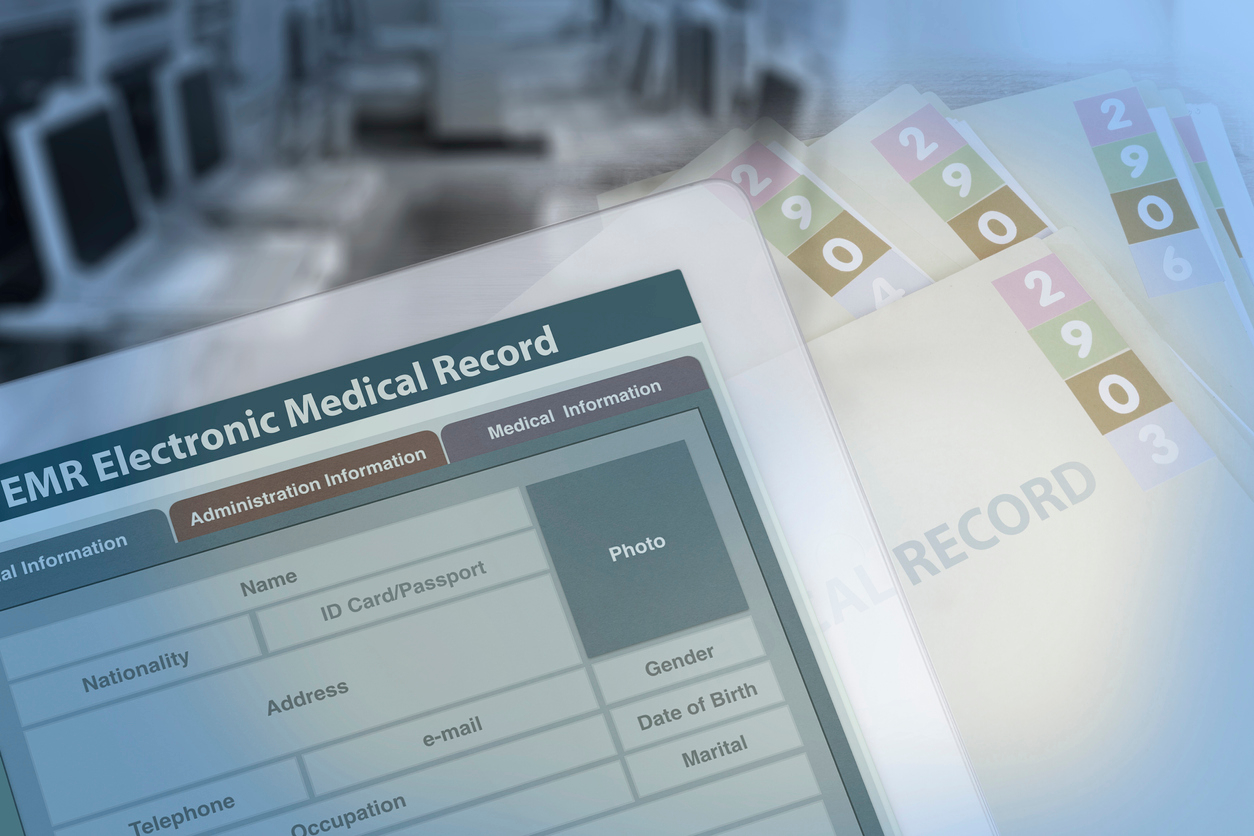Commitment + Clinical Leadership = Better Outcomes

Technology in Healthcare
Technology is always evolving and changing… even in healthcare!
There are discoveries and advancements taking place almost every day within the healthcare field. Let’s travel back through time to learn about some of the incredible milestones we have seen with technology in healthcare!
1816

This was the year when the stethoscope was invented.1 Rene Laennec, a French physician, takes credit for this medical tool. The first one was made as a wooden tube.2 Since then, many adjustments have been made to enhance the quality of the tool.
The stethoscope is still used today! Medical professionals use it to listen to your heart and lungs to determine your health.
1895

Wilhelm Conrad Röntgen discovered the X-Ray.3 At first, many people did not believe the reports of its first uses because it was a shocking and accidental discovery.4 The X-Ray was first discovered simply because Röntgen was testing cathode rays and their ability to pass through glass. He began experimenting with these rays and learned they can penetrate human flesh too.
This made an impact in the medical community because doctors in medicine could now see inside a human’s body without the need of a surgery. And now, the X-Ray is well-known around the world and is the go-to for doctors when they need to take a look at your bones.
1903
Dr. Willem Einthoven invented the first Electrocardiogram.3 An electrocardiogram measures your heart’s electrical activity.5 Doctors recommend the usage of this particular test to check for any kind of heart problem such as a heart defect, lack of blood flow, heart valve issues, and more.
In 1924, Einthoven received the Nobel Prize for his invention! The electrocardiogram is still commonly used today.
1943
This was the year the first dialysis machine was built! This helped remove toxins from the blood if someone’s kidneys could no longer do so. Can you believe it involved tin cans and washing machine parts?
Willem Kolff, a Dutch physician, came up with this invention. Dr. Kolff continued to improve his machine in the following years. In the 1950s, he developed a new machine.
As technology advanced, our treatment options using a dialysis machine have improved. Technology in healthcare has come a long way since the first dialysis machine!
1958
An external cardiac pacemaker was implanted into a patient for the first time!6 The first pacemakers generated an electrical pulse without any variation. This invention led to more research and development on pacemakers in the following years.
Today, there are pacemakers that can increase heart rate with activity.
1960

This was the year when a group worked together to come up with CPR (cardiopulmonary resuscitation).1 They combined mouth-to-mouth breathing and chest compressions to get what we know today as CPR.
This technique was first practiced on a dog… but look where it’s brought us today! CPR has saved many lives. There have been committees formed, conventions held, and classes started all to demonstrate the importance of CPR.
Visit cpr.heart.org. to learn more about CPR and how you can learn and understand this life-saving technique.7
1971
Dr. Godfrey Hounsfield made the first commercial CT scanner.3 This invention was used to look at tissues and the brain. It was first used on a patient in London. A few years later, these machines were installed in the United States.
Since then, CT scans have been used to successfully look at bones and tissues within the body. The machine now has improved picture quality, speed, and much more.8
1978

Dr. Raymond V. Damadian had begun experimenting with magnetic resonance and cancerous cells. It was between 1977 and 1978 when he announced that he had created a technique, called an Magnetic Resonance Imaging (M.R.I) to help diagnose diseases.
This machine provided more detail than an X-ray could. Six years later, the FDA approved this device. 9 For over 40 years now, doctors have been able to use M.R.I.s to help distinguish between normal and cancerous tissue. Technology in healthcare has allowed us to advance a great amount in medicine.
1982
The first artificial heart was received by Barney Clark.10 An artificial heart helps with blood circulation and oxygenation.
Today, this is most likely only used for a patient who is waiting to receive a transplant.
2003
The Human Genome Project was completed.11 Once complete, researchers were able to read the genetic blueprint of a human and had access to details on the organization and structure of human genes. The Project helped researchers discover that there are nearly 20,500 human genes.
This project first began in 1990 and many universities and research institutions throughout the United States and other countries were included.
2013

By 2013, about 80% of hospitals were using electronic health records.12 This allows patient information to be found in one spot.
There are many other advancements that have successfully taken place in the last century. One of the most recent being portal technology.
This allows doctors and patients to share a portal where patients can access their own records, and the doctors can post information and messages so their patients can see these easily. This has become popular versus calling over the phone to inquire about medical records. This especially makes it easy for patients to have their medical records and information readily available to them.
Where will technology take us next? Wearable technology that diagnoses illnesses and tailors treatments? These are just some of what the experts are predicting.
Saber Healthcare is an organization dedicated to providing consultant services to long term care providers. This article is for informational purposes and is not meant to be seen as professional advice. Please consult with a medical expert before relying on the information provided.
Sources
- “What is Modern Medicine?” Medical News Today. July 20th, 2020. https://www.medicalnewstoday.com/
- “History of the Stethoscope.” American Diagnostic Corporation. Accessed July 27th, 2020. https://www.adctoday.com/
- “Milestones in Medical Technology.” The New York Times. Accessed July 20th, 2020. https://archive.nytimes.com
- “German scientist discovers X-rays.” History. Accessed July 27th, 2020. https://www.history.com/
- “Electrocardiogram.” Healthline. Accessed July 27th, 2020. https://www.healthline.com/
- “History and Development of Pacemakers.” Inova. Accessed July 20th, 2020. https://www.inovaheart.org/
- “History of CPR.” American Heart Association. Accessed July 27th, 2020. https://cpr.heart.org/
- “Half A Century In CT: How Computed Tomography Has Evolved.” International Society for Computed Tomography. Accessed August 4th, 2020. https://www.isct.org/
- “When and why was MRI invented.” GE Healthcare. Accessed August 4th, 2020. https://www.gehealthcare.com/
- “The Most Life-Changing Health Advances of the Past 50 Years.” Keck Medicine of USC. Accessed July 21st, 2020. https://www.keckmedicine.org/
- “The Human Genome Project.” National Human Genome Research Institute. Accessed July 21st, 2020. https://www.genome.gov/human-genome-project
12. “10 Biggest Technological Advancements for Healthcare in the Last Decade.” Becker’s Health IT. Accessed July 20th, 2020. https://www.beckershospitalreview.com/
